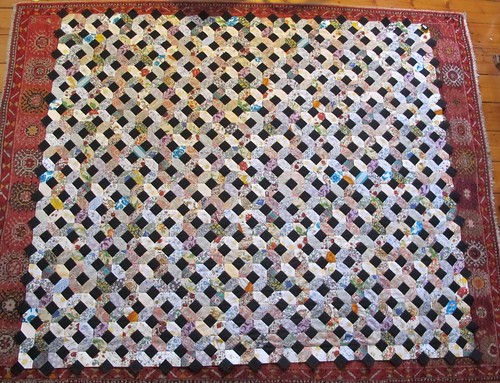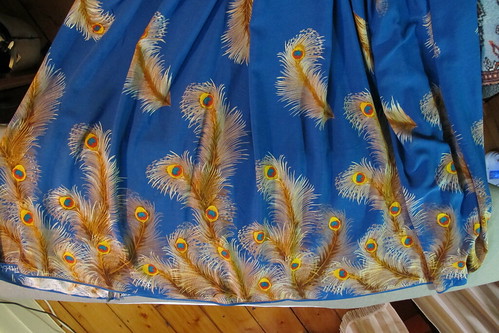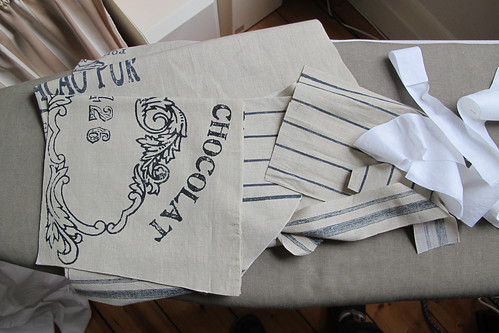I’m publicising my nightwear again. Completely decently I promise. Fine lawn is cool to wear and folds up small and light for travel. Add a busy print and it’s more decent in the opacity sense. Liberty Tana is of course perfect. I made a kimono style robe for summer traveling some years ago from a beautiful orange tulip Tana. I’ve been wanting a gown to go with it. I decided to use some of the left overs from the lattice patchwork, including the tulip print.
While working on the lattice, I found this second hand purple dress. It didn’t fit, but I rather thought the fabric might be Liberty Tana. It was home made, so no label to identify it. I now think it probably isn’t, but it’s very close in quality.
I used a little of it in the lattice. I deliberately kept the skirt whole, figuring it would be good for something needing acreage. Then I realised I could build a patchwork bodice, and use the skirt for this gown. I got a few squares out of the purple, enough to tie the bodice in visually. Measure the pattern. Work out a good size for the squares and how many are needed. Start laying them out:
Assemble the rough shape. This is for the front.
Then cut the pattern out of it, cursing when you realise you need to put darts in it.
Assemble the bodice, all with flat felled seams to keep it single layer and minimum weight, maximum cool. Adjust the skirt so it can be attached flat to the bodice. To maximise fullness neatly, I put an inverted pleat at centre back. The hem is the original with a bit of tweaking where I redid the seams.
A quick pic of it on. It’s baggy deliberately but the colours, though strange, work for me. No smile, I had a grump on.
The neck and armholes are finished with teeny straight grain facings, a trick I’ve adopted from my medieval costume work. It uses little fabric, is fairly quick to do and strengthens the edge.
Here it is with the robe over. I’m pretty happy with it.
and a gratuitous label shot. In this case the label is recycled from a now too small shirt.













































